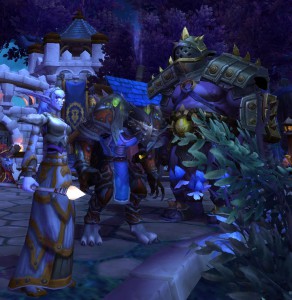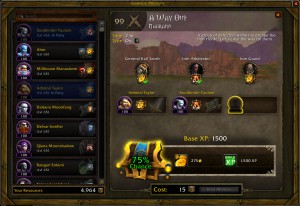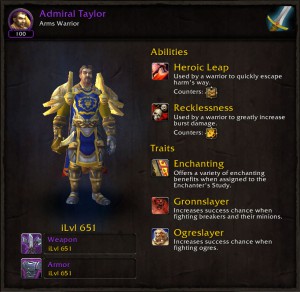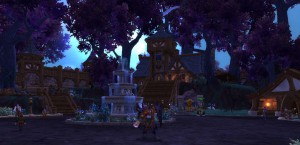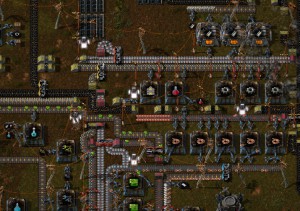Garrison – Followers
During my ongoing literature review I often discover interesting facts about things I’ve never thought about. Sometimes I can connect these facts with my own observations: The result is mostly a completely new idea why things are as they are. Maybe these ideas are new to you, too. Therefore I’ll share my new science based knowledge with you!
This week: This time, I think about the core game mechanics of a new feature added to World of Warcraft with the expansion pack Warlords of Draenor: the Garrison.
Apart from managing the Garrison and constructing new buildings, one of the core elements of the Garrison is the management of the own followers. A follower is a special Non-Player Character (NPC) who joined the player during his explorations of the WoD world. Each follower has an unique set of at least one ability and one trait which allows them to perform special tasks. The amount of available abilities depends on the qualification of a follower: uncommon (1 ability, 1 trait), rare (1 ability, 2 traits) or epic (2 abilities, 3 traits).
The abilities are needed to successfully complete the special follower missions. During such a mission, the followers have to defeat certain enemies who are attacking with an unique sets of skills. These attacks can be countered by assigning a follower with the right set of skills to this mission. This rock-paper-scissors concept challenges the players to analyze the skills of the enemies in order to assign the followers who have the right set of skills to counter the attacks and to complete this mission.
The traits of the followers fall into three different categories. The first category gives the followers a certain advantage during a mission. This can be an increased success chance when the follower is fighting together with a certain race (e.g. „Humanist“ increases the chance of success when the follower is on a mission with a human), in a certain region (e.g. „Cold-Blooded“ increases the success chance when the follower is fighting in the snow) or against a certain enemy (e.g. „Ogreslayer“ increases the success chance when the follower is fighting ogres). Furthermore, the followers can also increase the success chance based on the duration of the mission (e.g. „High Stamina“ increases the success chance when the duration is longer than 7 hours and „Burts of Power“ increases the success chance when the duration is shorter than 7 hours).
The second category is boosting the reward for successfully completing a mission. This can be an increase of the gained resources or of the gained experience.
The third category allows the players to assign the followers to work in one of the different building the players can construct in their Garrisons (e.g. „Blacksmithing“ enables the follower to work in a forge). Some followers even have a special „Bodyguard“ trait which enables them to accompany the players and to support them while they are fighting against some monsters.
The followers are also characterized by their experience. Like the players, the followers can gain some experience points during their missions and reach higher levels. The lowest follower level is 90 and the maximum follower level is 100. After reaching the maximum level, the followers can continue gaining experience points in order to raise their qualification. This approach allows the players to boost an uncommon level 90 follower to an epic level 100 follower. By doing so, the follower also gains new abilities and new traits which makes him more powerful.
Reaching level 100 enables the follower also to wear some equipment to increase their so-called item-level. The item-level is needed to enable the followers to participate in some prestigious missions. If the follower is not fulfilling the item-level requirement of these Garrison-„endgame“-missions, then he can not increase the overall success chance and the mission might end in a failure.
All these examined game mechanics are challening the player’s problem solving and decision making abilities. The players have to analyze the requirements of a mission in order to assign the right followers to it. Moreover, the players have to analyze the traits of their followers to recognize if the follower might be useful for other tasks than just participating in some missions. Finally, the players have to distribute special follower items in order to boost their item-levels.
to be continued …
